City Hall and Place | Eight Houses, A Disappearing Village in the City
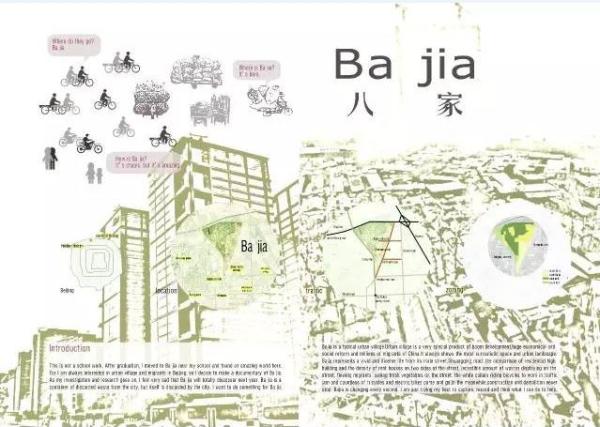
No one may remember the "Eight Families" in the future. But it was once the most backward, messy, congested and noisy village in Beijing. Six years ago, eight families were full of vitality, but now they have been demolished.
After graduating from college, I lived in this village in the city near my school for a year. At that time, my roommate still lived in this area. She said that there are fewer and fewer food markets here, and there is no place to buy cheap food.
This place that has disappeared now is memorable.
Where are Bajia?
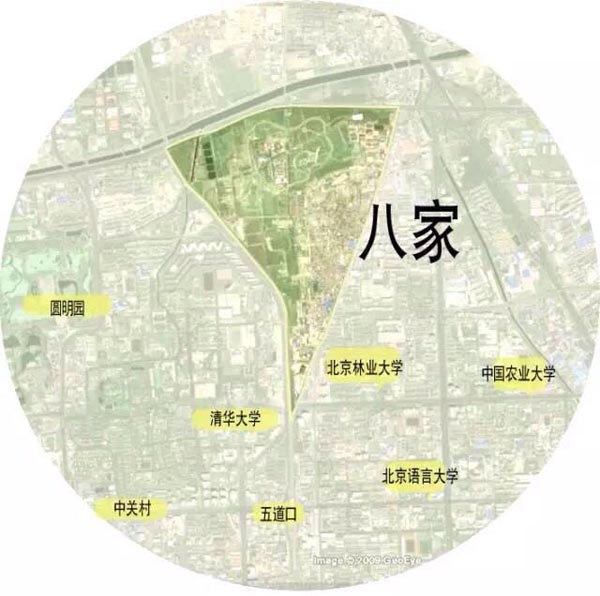
Wudaokou is famous as the "center of the universe". From Wudaokou subway station, go north along Shuangqing Road, and you can reach Bajia in 10 minutes by bike. Bajia is about 3 kilometers away from Tsinghua University, and the land in the village was mainly expropriated by Tsinghua University, and university dormitories were built one after another.
After 2003, Beijing’s housing prices began to rise rapidly. As the land price became higher and higher, the relocation expenses of Bajia became higher and higher, and the speed of land expropriation slowed down, gradually forming a village in the city. In 2010, the village was gradually demolished. The author returned to Beijing in 2013, and the whole village in the city has completely disappeared.
Eight were once called the most backward, messy, congested and noisy villages in Beijing. In 2010, there were more than 2,400 villagers in eight households, mainly living by renting houses. Around 1992, eight flea markets were formed, and there were three large markets. Around 1995, there was a migrant population who collected junk. Later, some second-hand goods markets were shut down one after another, but the migrant population concentrated areas have been formed.
Urban villages facing extinction
Between the floating population and the development of modern cities, the village in the city has built a bridge and is a tolerant post. There are not only cheap houses here, but also cheap lifestyles. It is also a buffer zone to alleviate social contradictions and make the floating population better adapt to the life in big cities. However, with the expansion of the city, the original suburbs have become urban areas, and even become centers (such as Wudaokou, the center of the universe), and the surrounding land prices are getting higher and higher, and the villages in the city are about to become extinct.
As a cultural and political center, Beijing is different from Shenzhen, where many villages in the city have become artists’ settlements. Yuanmingyuan painter village, Shucun village and Beijing East Village are all not far from Bajia. However, Bajia Village is not contaminated with romantic artistic atmosphere, but it shows us another severe challenge: garbage.
A gathering place for garbage collection
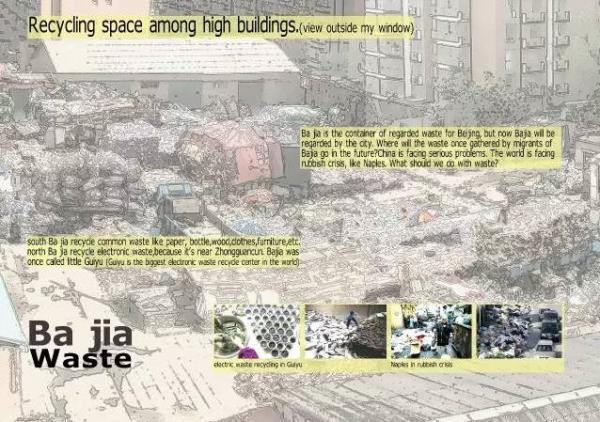
Bajia village is famous for garbage recycling. The eight families are divided into the first eight villages and the last eight villages, one in the south and the other in the north. The scavengers in the first eight villages mainly collect domestic garbage, while the latter eight villages mainly engage in the recycling and dismantling of waste electronic products.
Bajia, near Zhongguancun, was known as "Beijing electronic waste transfer station", which was the largest gathering area of electronic waste in Beijing at that time. Someone said, "As many new computers as Zhongguancun can sell, we can collect as many old computers here."
These scavengers have made great contributions to garbage recycling. Six years ago, from the window of my room, I could see a big garbage dump surrounded by high-rise buildings in various residential areas. The people inside worked from morning till night every day, and built a series of "carton mountain", "plastic bottle mountain" and "wooden board mountain", which made it a surreal huge stage.

On weekdays, they rode tricycles to collect the recyclable resources abandoned by the imperial city. However, due to the lack of management, it also caused some environmental problems. The streets and yards of Bajia are full of garbage dumps. Some people think that this has affected the image of the city. It has also been suggested to "collect" scavengers and form urban garbage recycling cooperatives.
Evolution of streets
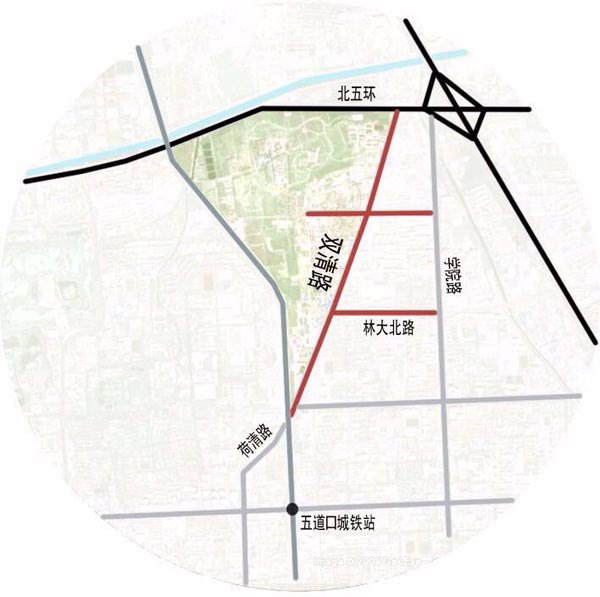
There are different types of streets in Bajia and its vicinity, from which we can see the evolution process:
Heqing Road leads to Wudaokou. Although there are lush plants and comfortable sidewalks on the roadside, vendors will never sell things here. Because there are few pedestrians and vehicles here, the bicycle lane becomes a parking lot, which is very deserted and unsafe to walk at night.
Because Linda North Road is close to Shuangqing Road, there are residential buildings on the roadside, and the sidewalks are occupied by vendors. They just shade under the street trees, but it is lively only in the afternoon.
Xueyuan Road is a typical road in Beijing, with bus lanes and bicycle lanes, bus stops on the roadside, overpasses when crossing the road, and pedestrians are in a hurry. There are occasional vendors at stations and road intersections, but be careful of sudden attacks by urban management.
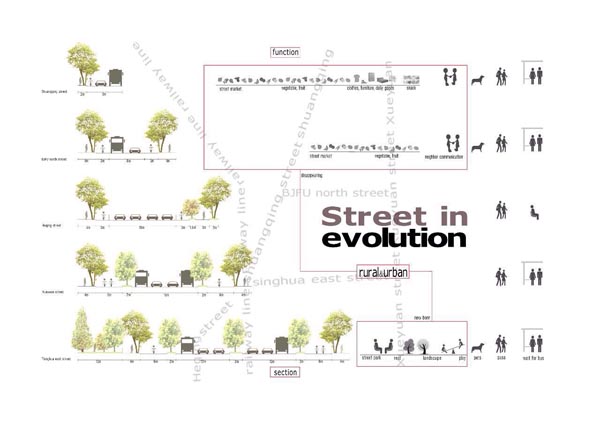
Shuangqing Road is a special case. Shuangqing Road is the main road of Bajia, which is an old road and a very interesting road. Urban space is often a manifestation of social reality, and this road is a stage to show the vitality and changes of the city.
A road separating social classes.
Because IT is close to Tsinghua University and other universities, as well as Tsinghua Science Park, Zhongguancun and Wudaokou, there are also college students, professors, IT white-collar workers and migrant workers from all walks of life. In 2009, in a three-room house I rented at that time, there lived four newly graduated college students and a graduate student who just started working.
The difference in income has evolved into the difference in urban space in eight cities, and Shuangqing Road may be called a dividing line of social strata. It separates two kinds of people. One is "drifting to the north" who live in a residential area in the east. They have knowledge and technology, and they can get a job with considerable income and work hard to take root in this city.
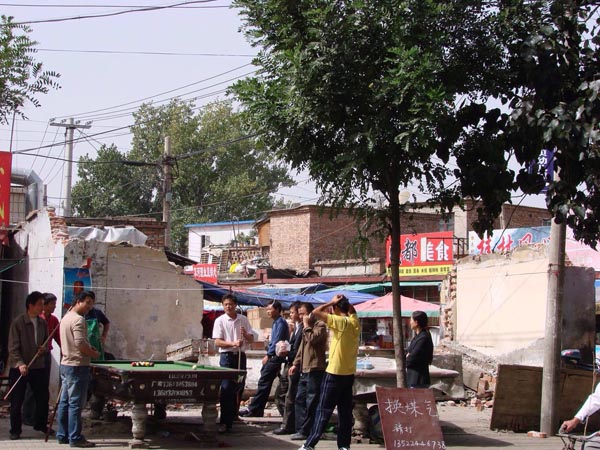
The other is the migrant workers living in the bungalow area in the west, including most scavengers, and most of them are migrant farmers. They are engaged in manual work in this city, not only to support themselves, but also to send their savings back to their hometown. Although living in a big city, many migrant workers don’t have much chance to get to know the city. Some rented houses in Bajia don’t even need sunshine. Because of the life style of migrant workers, the architectural form has also changed, and sunshine has become a luxury unrelated to architecture.
A street that cars hate.
Shuangqing Road is the most dynamic street I have ever seen in Beijing. To the east of Shuangqing Road is a high-rise building that has been planned by the city, including a residential area, a hotel and a research unit, and to the west is a bungalow area. When the author first arrived at Bajia, the sidewalk of Shuangqing Road was full of all kinds of old furniture. This 100-meter-long sidewalk became a display window for vendors, and all kinds of old clothes, waste paper, plastic bottles and other recycled wastes were displayed on the street with surreal volume.
In the afternoon, the garbage collectors returned and the road became chaotic and dangerous. There are tricycles, bicycles, electric cars, carriages, trucks, cars, and pedestrians walking through the cracks. The southern end of Shuangqing Road is a train crossing, which is also the intersection of four intersections, so traffic jams often occur (anyone familiar with Wudaokou knows that this intersection is a nightmare for all vehicles). Ordinary taxi drivers are reluctant to come to eight.
A favorite market street for floating population
The small shops along Shuangqing Road create a vibrant social field. The narrow grocery store covers almost all the necessities of the floating population. Small restaurants with different regional tastes meet the tastes of different outsiders, as well as hair salons, car repair shops and hardware stores. When I lived here, almost all the daily necessities came from those grocery stores, because their prices were usually half or even less than those of supermarkets.
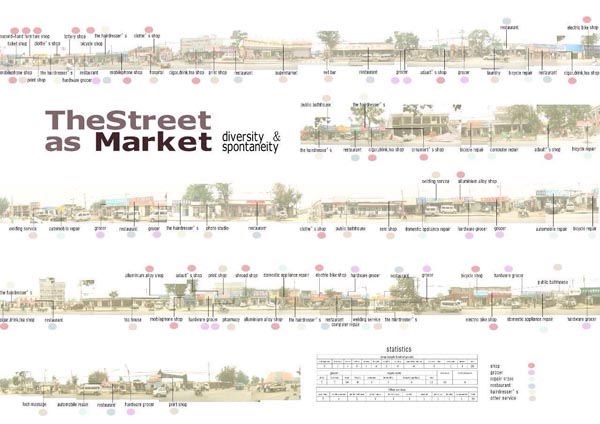
Most floating population do not live here for a long time, so there is no need to buy good quality products. This short-term consumption habit has promoted the prosperity of small shops.
The grocery store is usually the place where the owner works and lives. Outside is the store, and inside is the place where the stock is stored and the food is eaten and slept. In this way, you don’t have to rent another room, and you can stay open until late at night. This "compact urban space" has been mentioned by many urban researchers, and it is a mixed-function lifestyle with the characteristics of urban villages. But behind the prosperity, there is also fierce competition, and new shops can always be seen here. Moreover, with the demolition, the small restaurant that may have just eaten yesterday was demolished this morning.
A stage street full of vendors’ vitality
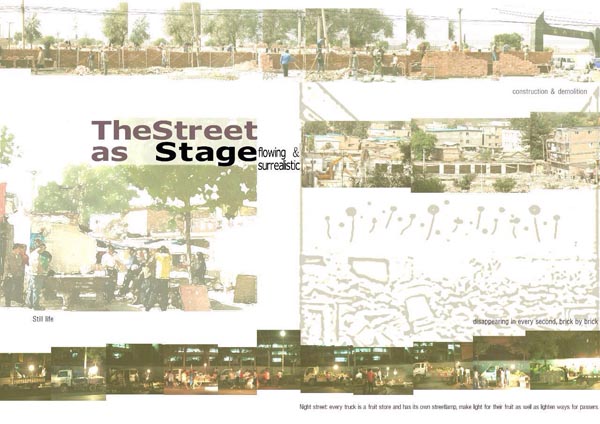
Every afternoon, vegetable and fruit stalls occupy half the road. Small vegetable sellers go home after selling vegetables. They usually use a three-wheeled flatbed car to transport goods, and a piece of cloth on the ground is the shop. Most of these vegetables are left over from other markets in Beijing, because vendors live here and dispose of the remaining vegetables in the afternoon, so the price is very cheap, often a pile of one yuan.
Fruit sellers usually drive trucks. Every afternoon, they use trucks to occupy a booth, which is a kind of fixed vendor. They will stay late into the night, because people who come back from work can’t take the bus to their door, and they have to walk through this street. When they see cheap and fresh fruits on the roadside, they will bring some home.
Because there is no street lamp, vendors set up a small street lamp to illuminate their fruits, and also illuminate the way forward for tricycles full of recycled garbage and passers-by looking forward to a warm dream. Walking on this street at night, you will see these neatly arranged trucks. Crossing the street is like crossing a fruit runway show.
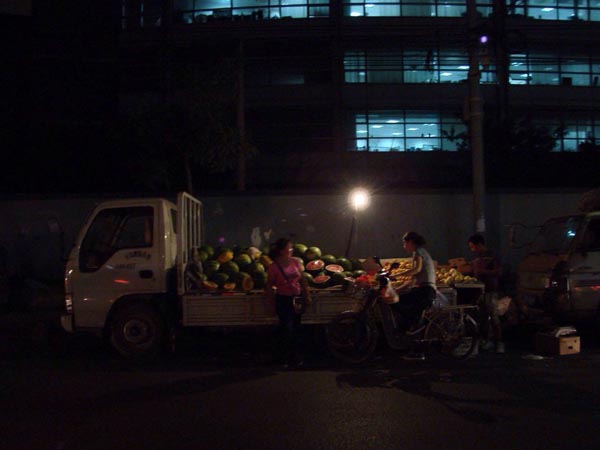
Eight night markets are also famous. The night market is mainly at the intersection of Shuangqing Road and Linda North Road, which is the only way to enter Bajia. There is also a night market near Wudaokou Metro Station, which mainly sells clothes and small things. There are many vagrants and beggars, and most of them are fashionable young people and foreigners. It is a place for recreation and entertainment. The night markets of Bajia are mainly snacks such as food stalls, mala Tang, barbecues, etc. The residents of Bajia mainly go shopping. It seems that people here are more concerned about filling their stomachs.
Destroyed street
Jane Jacobs wrote in Death and Life of American Big Cities: "The deep roots of roads contain people’s public identity, a network of mutual respect and trust in public life, and resource support for the needs of individuals and neighbors." The streets of Bajia are chaotic, but unlike the neighboring streets, they become "ghost streets" at night, and the vitality here makes people feel safe. No matter how late you walk in the street, you can always see some tricycles pulling goods, some vendors, and pedestrians rushing home. They will all become the caregivers of this street.
Modern cities are slowly destroying the former streets with large-scale carriageways. When a street is transformed into a convenient motor vehicle traffic lane, people’s desire for this street is reduced, and the purpose of their behavior is clear. Hurry through these streets and reach another place. A street is just a path to a building, a path manipulated by traffic rules.
Once the street is regarded as a path, then whether the street is unobstructed and whether the people and traffic are dense becomes the main problem to be considered, that is, the main problem of traffic planning. Then, the streets will provide more space for cars, and people will have greater demand for cars, forming a vicious circle. Just like a straight river built for flood control, the river will slowly lose its water storage capacity and dry up, eventually becoming a drain.
Mathias Woo, a cultural critic in Hong Kong, once criticized the disappearance of streets and vendors in Hong Kong, leaving only air-conditioned shopping malls and residential quarters, and the diversified urban landscape and citizen life in Hong Kong disappeared.
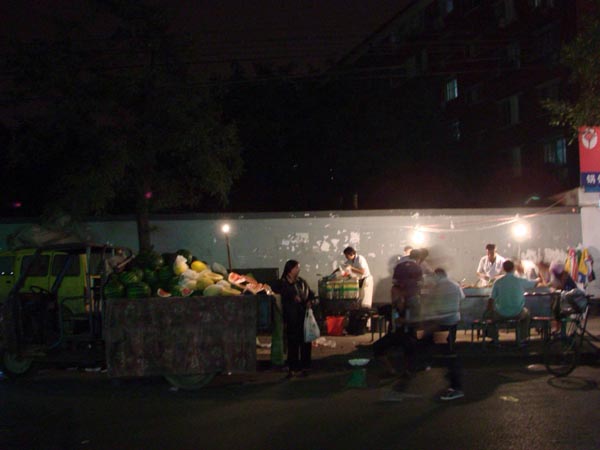
Perhaps in the eyes of Jane Jacob and Mathias Woo, Shuangqing Road is a rare "street", but it is hard to escape the fate of being destroyed. Shuangqing Road is very narrow, and buses can only go one way. Vendors occupy about a quarter of the street. People who get off work push bicycles, their eyes are picking vegetables, fruits and various commodities on the stalls, and their ears are mixed with all kinds of hawking.
The street here is no longer a gateway to a building, but a vibrant market. Whether driving, riding a bicycle, pushing a tricycle or walking, all people are equal, and vendors will make you happy with their humor.
People like to buy things while walking, and buy cheap and fresh goods. Therefore, vendors are willing to stay here and come to grab a good position every day. Although they are mobile, they are fixed on this street. They will say to customers, don’t worry, I am here every day. Such a promise has built an invisible space and a unique shop for them.
What is transformation?
In 2010, I witnessed the foundation stone laying ceremony of eight relocated houses. Some villagers will move to the relocated houses in the north of Bajia Village, and some villagers will move back to further places.
When taking photos at a demolition site, I met an old couple who lived in the village. The old couple had a Labrador, saying that the dog suddenly came to the yard one day and lived with them ever since. They also have a roof garden, planted some vegetables and stood on the roof overlooking the whole village. Now, I don’t know which suburban resettlement community the old couple live in, and whether they will miss the eight families.

Jane Jacobs said that there is a magical order behind some seemingly chaotic places, which is maintaining the safety of streets and the freedom of cities. There is also something worse than public ugliness and chaos, that is, wearing a hypocritical mask and pretending to be orderly. Its essence is to turn a blind eye to and even suppress the real order that is struggling and demanding attention. It is precisely because of the lack of research on what is chaos and what is order that people often can only judge people by their appearances. Urban civilization is not tolerant enough to encourage the formation of all kinds of diversity, but is eager to dress up beautifully.
The eight families in memory disappeared. The eight families witnessed a special experience of a young man. Those eight houses are hiding all kinds of rubbish discarded by huge cities. The eight families that once existed witnessed the close relationship between the floating population and modern consumer cities and various vested interests. Here, I only miss eight families with this article.